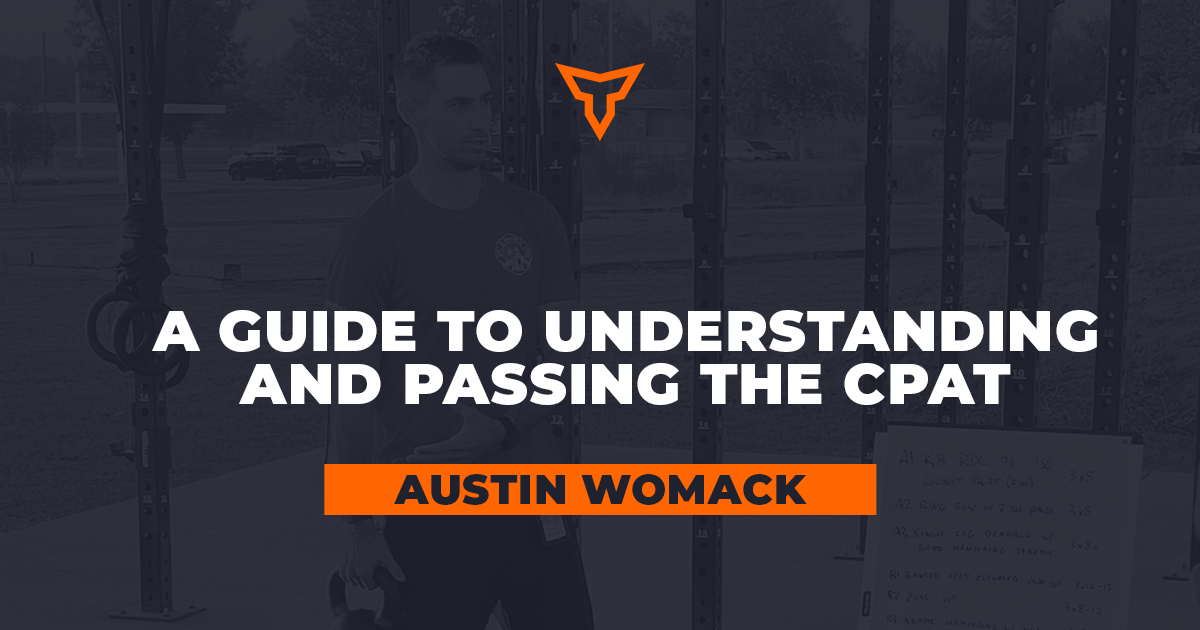Running Injuries in Tactical Athletes: What Coaches Can Do About It?
Military personnel run for physical training and fitness testing, but running accounts for a high number of injuries. Lovalekar et al. (2021) reported that musculoskeletal injuries accounted for over 4 million days of limited duty in United States Army soldiers within 6 months. Running can lead to lots of lower-extremity injuries (Fredette et al. 2021; Raghunandan et al. 2021), which is a large financial burden for the military and inhibits operational readiness. Therefore, military personnel need methods to reduce lower-extremity injuries, especially those related to running.
This article will focus on extrinsic or modifiable risk factors, including cadence (steps per minute), step-width, foot-strike pattern, and trunk lean. In my experience, many running-related injuries are due to improper running technique. This article will provide strength and conditioning coaches with efficient and effective ways to influence running form in military personnel to mitigate injury risk. Specifically, this article will focus on the following points:
- How does improper running technique increase stress on the body?
- How does improved running technique decrease stress on the body?
- Cues that human performance professionals can use to improve running form
Definitions
- Intrinsic Risk Factors: include anatomy, sex, and biomechanics (Raghunandan et al. 2021; Warden et al. 2006).
- Extrinsic Risk Factors: include exercise parameters, environment, equipment, running form, and programming (Raghunandan et al. 2021; Warden et al. 2006).
- Hip Adduction Angle – also known as a Trendelenburg Sign, a hip hike of the ipsilateral hip in relation to the contralateral hip
- Vertical load rate – ground reaction forces or the amount of force enacted on the body during stance phase
- Knee Stiffness – how much or little the knee flexes during stance phase
- Rearfoot Eversion Angle – inward tipping of the calcaneus in relation to the tibia
- Vertical Average Load Rate – the amount of force applied to the body during stance phase
- Vertical Instantaneous Load Rate – the increase in force applied to the body during foot-strike
- Braking Force – the amount of oppositional force enacted on the body during foot-strike
- Step Width - the width between each foot during its respective stance phase. The studies included in this article measured step width by a percentage of leg-length. For example, a 5% step-width represents 5% of the participants leg-length.
Extrinsic Risk Factors and How to Modify Them
Bodily Movement
Research has demonstrated altered hip movement in runners with a history of tibial stress fractures. Hip adduction angles are greater in runners with a history of tibial stress fractures compared to runners without a history of tibial stress fractures (Pohl et al., 2008). Note that a coach can video a runner from behind to assess hip adduction or hip hike. This can easily be assessed by viewing the waist line and if the hip drops during the stance phase. Research has demonstrated that increasing cadence by 10% reduces hip adduction angle (Yong et al., 2018). Hip adduction angles are greater in runners with a history of tibial stress fractures, but decreasing hip adduction angle can be accomplished by increasing cadence, which will be discussed in the next section.
Research has demonstrated greater tibial shock in runners with a history of tibial stress fractures. Runners with a history of tibial stress fractures have higher tibial shock or acceleration (Milner et al., 2006; Pohl et al., 2008; Milner et al., 2007). In my experience, coaching runners to foot-strike with their foot directly under their hips (instead of in front) reduces general discomfort in the lower extremity, but a runner's comfort does not relate to tibial shock.
Tibial stress fractures are also related to rearfoot position. Pohl et al. (2008) and Milner et al. (2010) demonstrated that runners with a history of tibial stress fractures had greater rearfoot eversion compared to runners without a history of tibial stress fractures. Rearfoot position can be influenced by step-width. Brindle et al. (2014) demonstrated that a wide step-width (approx. 14% of leg-length) decreased rearfoot eversion compared to participants’ preferred step-width (approx. 5% of leg-length). Further, a narrow step-width (approx. 1% of leg-length, resulting in a cross-over foot pattern) increased rearfoot eversion compared to a preferred step-width (Brindle et al., 2014).
TLDR: Runners with a history of tibial stress fractures likely have greater rearfoot eversion, and increasing step-width reduces rearfoot eversion.
External Forces Acting Upon the Body
Research has demonstrated that vertical average load rates and instantaneous load rates are related to chronic, non-contact lower extremity injuries and tibial stress fractures. Vertical average load rates are higher in runners with a history of chronic, non-contact lower extremity injuries and tibial stress fractures compared to runners without a history of tibial stress fractures (Johnson et al., 2020; Milner et al., 2006). Further, vertical instantaneous load rates are higher in runners with a history of chronic, non-contact lower extremity injuries and tibial stress fractures (Johnson et al., 2020; Milner et al., 2006). Research supports that vertical average load rates and instantaneous load rates are higher in runners with a history of chronic, non-contact lower extremity injuries and tibial stress fractures.
Trunk position concerning the lower body influences external forces acting upon the body. Research has demonstrated that an excessive forward lean increases vertical average load rate, vertical instantaneous load rate, vertical impact peak, and peak tibial acceleration (Huang et al., 2019). Huang et al. (2019) demonstrated that a preferred trunk lean was approximately 20° and an excessive forward lean was approximately 28°. Practically, it would be challenging to appreciate a small difference. However, a coach can cue different positions so that a runner can identify the preferred trunk angle for them.
Additionally, a coach should have a runner run on a treadmill. The coach can then cue the runner to adjust their trunk lean, trying various positions to identify their preferred trunk position. Coaches need to listen to the runners’ foot-strike. Ideally, a runner has a quiet foot-strike. If a runner has a loud foot-strike, then that specific trunk position may not be ideal for them. This can also be helpful for the runner to hear their footsteps. They may be able to appreciate the difference it makes and its relationship to how they feel when running.
Cadence also influences average vertical load rate, vertical instantaneous load rate, ground reaction force, and braking impulses. Practically, human performance professionals can easily coach and influence a runner's cadence. A metronome (found in any smartphone app store) or wearable technology (such as smartwatches) can identify a runner’s cadence. Initially, a runner's baseline cadence should be established before making changes. Therefore, a coach can use a metronome and match it with the runners’ cadence, or the runner can show recent cadences from their wearable technology. Then, a coach can cue increases in cadence, if needed. For example, if a runner presents with a cadence of 150 steps per minute when running at 5.5 mph, they only need to increase their cadence (do not increase speed). The runner can then increase their cadence by 7.5-10%, or 162-165 steps per minute.
Foot-strike pattern can also influence average vertical loading rate, vertical instantaneous loading rate, and peak tibial acceleration. Huang et al. (2019) demonstrated that a rearfoot strike pattern resulted in greater average vertical loading rates, vertical instantaneous loading rates, and peak tibial acceleration compared to a midfoot and forefoot strike pattern. Further, a midfoot strike pattern resulted in greater average vertical loading rates, vertical instantaneous loading rates, and peak tibial acceleration compared to a forefoot strike pattern. Note that the foot strike pattern did not influence the vertical impact peak. Practically, coaches need to simultaneously cue foot-strike patterns and the position of the runner's feet.
A coach must track cadence and where the foot strikes concerning the body to influence the foot-strike pattern. Specifically, to adopt a midfoot or forefoot strike pattern, a runner will need a high cadence, and their foot should strike directly under their hips (not in front). Runners will report feeling awkward if their foot continues to strike in front of their body while they try to adopt a midfoot or forefoot strike pattern. Additionally, many runners will report that a high cadence and forefoot strike pattern feels awkward and takes more effort compared to their preferred cadence and foot-strike pattern, and this has been supported by Huang et al. 2019. However, in the authors’ experience, a high cadence and midfoot or forefoot strike pattern will feel less awkward and more effortless as the runner adjusts to the new pattern.
Conclusion
In conclusion, physical training and testing for military personnel often includes running. However, running also relates to a high number of lower extremity injuries. Strength and conditioning coaches can mitigate injury risk by increasing cadence, ensuring step-width does not lead to a cross-over pattern, a preferred trunk lean, and adopting a midfoot or forefoot strike pattern. In my experience, teaching “the why” behind modifying gait will notably help with buy-in, resulting in improved compliance. A myriad of other modifiable risk factors are related to increased lower extremity injury risk. Future articles will further elucidate these modifiable risk factors.
References
- Adams, D., Pozzi, F., Willy, R. W., Carrol, A., & Zeni, J. (2018). Altering cadence or vertical oscillation during running: Effects on running-related injury factors. International Journal of Sports Physical Therapy, 13(4), 633.
- Brindle, R. A., Milner, C. E., Zhang, S., & Fitzhugh, E. C. (2014). Changing step width alters lower extremity biomechanics during running. Gait & Posture, 39, 124-128.
- Fredette, M. A., Roy, J. S., Esculier, J. F., & Perreault, K. (2021). Most military runners report recent changes in running parameters before lower limb injury onset. Military Medicine, 186(11-12), e1140-e1148.
- Huang, Y., Xia, H., Chen, G., Cheng, S., Cheung, R. T. H., & Shull, P. B. (2019). Foot strike pattern, step rate, and trunk posture combined gait modifications to reduce impact loading during running. Journal of Biomechanics, 86, 102-109.
- Johnson, C. D., Tenforde, A. S., Outerleys, J., Reilly, J., & Davis, I. S. (2020). Impact-related ground reaction forces are more strongly associated with some running injuries than others. The American Journal of Sports Medicine, 48(12), 1-9. Doi: 10.1177/0363546520950731.
- Lovalekar, M., Hauret, K., Roy, T., Taylor, K., Blacker, S. D., Newman, P., Yanovich, R., Fleischmann, C., Nindl, B. C., Jones, B., & Canham-Chervak, M. (2021). Musculoskeletal injuries in military personnel – Descriptive epidemiology, risk factor identification, and prevention. Journal of Science and Medicine in Sport, 24, 963-969.
- Milner, C. E., Ferber, R., Pollard, C. D., Hamill, J., & Davis, I. S. (2006). Biomechanical factors associated with tibial stress fracture in female runners. Medicine and Science in Sports and Exercise, 38(2), 323-328.
- Milner, C. E., Hamill, J., & Davis, I. (2007). Are knee mechanics during early stance related to tibial stress fracture in runners? Clinical Biomechanics, 22, 697-703.
- Milner, C. E., Hamill, J., & Davis, I. S. (2010). Distinct hip and rearfoot kinematics in female runners with a history of tibial stress fracture. Journal of Orthopaedic & Sports Physical Therapy, 40(2), 59-66.
- Pohl, M. B., Mullineaux, D. R., Milner, C. E., Hamill, J., & Davis, I. S. (2008). Biomechanical predictors of retrospective tibial stress fractures in runners. Journal of Biomechanics, 41(6), 1160-1165.
- Raghunandan, A., Charnoff, J. N., & Matsuwaka, S. T. (2021). The epidemiology, risk factors, and nonsurgical treatment of injuries related to endurance running. Current Sports Medicine Reports, 20(6), 306-311.
- Wang, J., Luo, Z., Dai, B., & Fu, W. (2020). Effects of 12-week cadence retraining on impact peak, load rates and lower extremity biomechanics in running. PeerJ, 8, e9813.
- Warden, S. J., Burr, D. B., & Brukner, P. D. (2006). Stress fractures: Pathophysiology, epidemiology, and risk factors. Epidemiology and Pathophysiology, 4, 103-109.
- Yong, J. R., Silder, A., Montgomery, K. L., Fredericson, M., & Delp, S. L. (2018). Acute changes in foot strike pattern and affect running parameters associated with tibial stress fractures. Journal of Biomechanics, 76, 1-7. Doi: 10.1016/j.jbiomech.2018.05.017.
Zifchock, R. A., Davis, I., & Hamill, J. (2006). Kinetic asymmetry in female runners with and without retrospective tibial stress fractures. Journal of Biomechanics, 39(15), 2792-2797.
Subscribe to our blog
Subscribe to receive the latest blog posts to your inbox every week.
Related posts

Things I Wish I Knew Before Going TSAC: Part 3

A Guide to Understanding and Passing the CPAT


